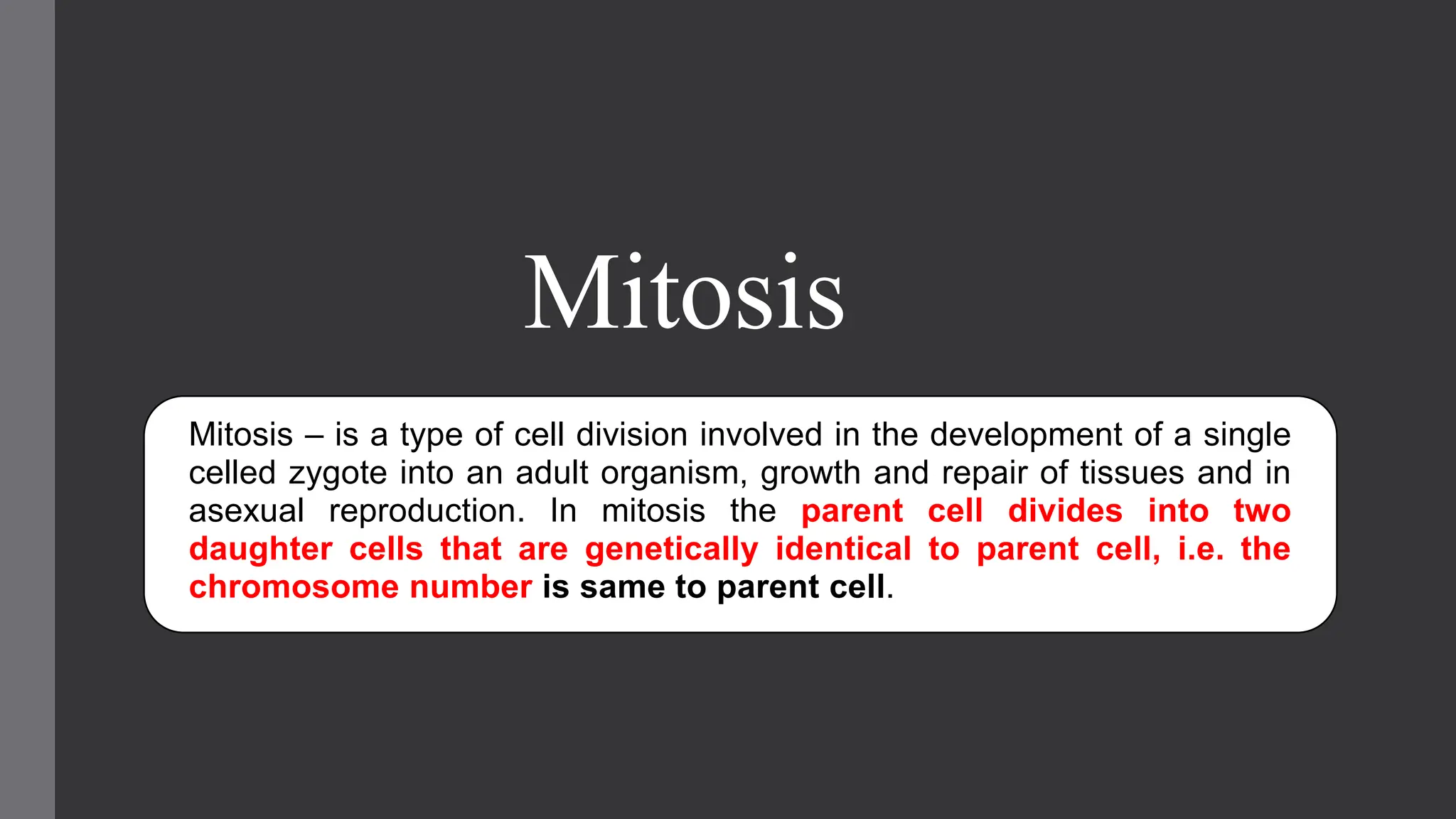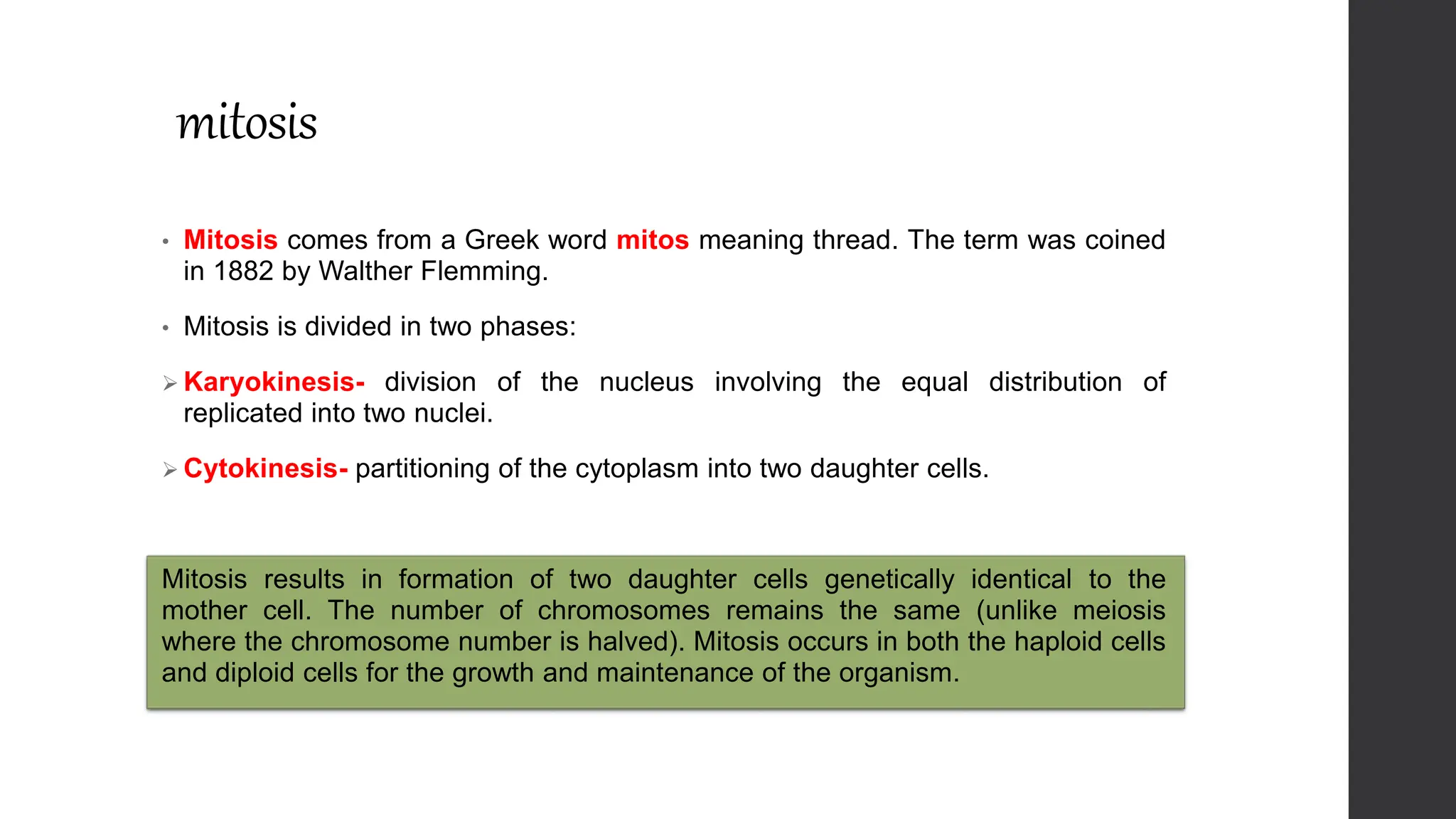Mitosis is a type of cell division that results in two genetically identical daughter cells and is essential for growth, repair, and asexual reproduction. The cell cycle includes phases of interphase (G1, S, G2) and mitosis, with interphase occupying 95% of the time. Mitosis consists of karyokinesis, which is the division of the nucleus, and cytokinesis, the division of the cytoplasm, each involving specific processes and structures to ensure accurate chromosome separation.

















